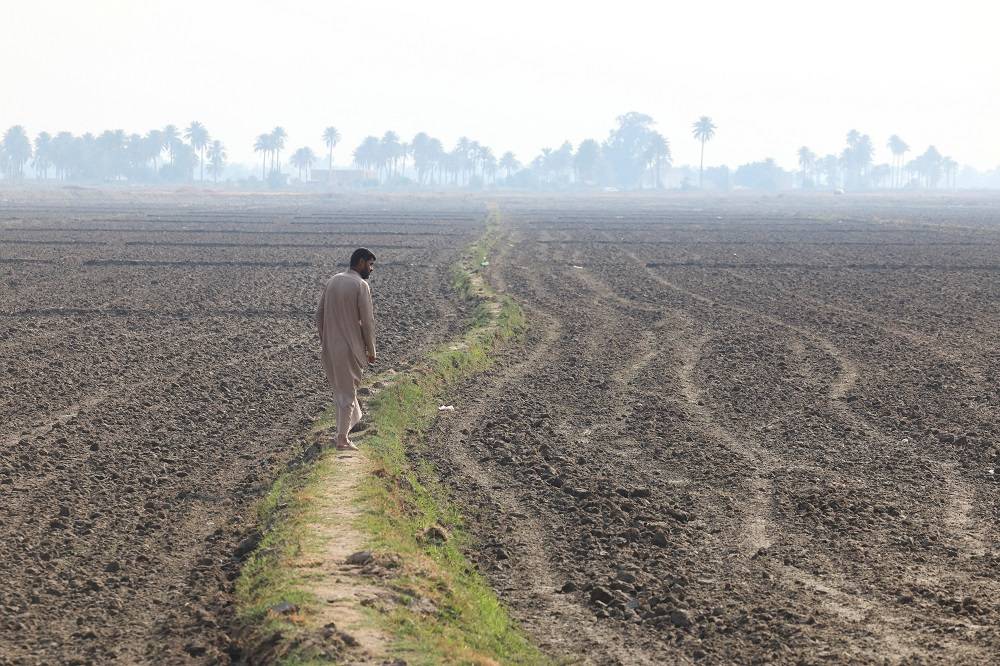Lebanon only twice witnessed a smooth transition of power from one president to a successor in its 79 years of independence.
Out of 12 presidents who had come to power since 1943, only twice was the transition a smooth process, underlining the extent of the complexities that have plagued the country for decades.
Presidential terms often end in conflict, vacuum or wars.
Two months before the end of President Michel Aoun’s term, vacuum appears to be the likely scenario in store.
The last time vacuum took place was in 2014 after the term of Aoun’s predecessor, Michel Suleiman, ended without political rivals agreeing to a successor. It took them over two years to agree on Aoun’s election as head of state.
The constitution stipulates that a quorum of 86 lawmakers is needed to elect a president at parliament. Of those numbers, 65 votes are needed for a candidate to be elected president.
At the current parliament, it is a hard ask for the rival parties to secure 65 votes for any candidate without them reaching a political settlement ahead of the elections.
Former minister, Professor Ibrahim Najjar told Asharq Al-Awsat that the weeks and months preceding the end of a term of a president are usually marked by “ugly practices” that spark the drive to form a new majority to replace the former one in what is seen as rotation of power.
The end of presidential terms in Lebanon have often witnessed controversies, such as foreigners being naturalized for hefty sums, the division of spoils, and preparations for family relatives to assume the political mantle.
In other words, Lebanon is a democratic state only on paper, not in practice, he added.
Furthermore, Najjar noted that ends of presidential terms in Lebanon, since the signing of the 1989 Taif Accord, have all been different.
The post-Taif period was marked by Syria’s hegemony over Lebanon. It witnessed the extension of the terms of presidents Emile Lahoud and Elias Hrawi. After the Syrian troop withdrawal in 2005, Hezbollah became the dominant player.
The Iran-backed party sought to impose Aoun as president. The period witnessed a string of political assassinations, the government headquarters in downtown Beirut were besieged by pro-Syria and Hezbollah loyalists and the parliament was suspended.
The pressure culminated in the 2008 signing of the Doha agreement that led to Michel Suleiman’s election as president instead of Aoun.
Slighted, Aoun contested Suleiman’s every move throughout his term until he was elected his successor.
His election was also an arduous task, however.
Suleiman left the presidential palace at the end of his term in 2014, but sharp political divisions hindered an agreement over his successor, leaving Lebanon in vacuum.
Aoun’s allies exerted their pressure by forcing officials to choose between heading to the “edge of hell” or the “edge of chaos”.
Revolts, vacuum and war
Since 1943 and up until the Taif, Lebanon witnessed the election of eight presidents: Beshara al-Khoury, Camille Chamoun, Fuad Chehab, Charles Helou, Suleiman Franjieh, Elias Sarkis, Bashir Gemayel and Amin Gemayel. Post-Taif, Lebanon witnessed five presidents: Rene Mouawad, Elias Hrawi, Emile Lahoud, Michel Suleiman and Michel Aoun.
Political analyst George Ghanem noted that the majority of ends of terms never witnessed a smooth transition of power.
Pre-Taif, the only smooth transition happened between Chehab and Helou, he said.
Post-Taif, the only smooth transition happened between Hrawi and Lahoud during the time of Syria’s political and security hegemony over Lebanon, he added.
Lebanon has grown accustomed for ends of presidential terms to be times of peaceful or bloody revolts, constitutional vacuum, tensions, tumult and wars, he explained.
Khoury was toppled in 1952 in a peaceful coup against the constitution. It was a period of unrest and a general strike that led to Chamoun’s election, noted Ghanem.
Chamoun, himself, was ousted in a bloody coup during which Lebanon was divided along sharp sectarian and regional lines: One camp supported Egyptian President Gamal Abdul Nasser and the other was pro-American and West.
The coup started in 1958 and only ended with Chehab assuming power, said Ghanem.
Helou’s term ended with problems with Palestinian freedom fighters. Franjieh’s term ended with the civil war, which erupted on April 13, 1975.
Sarkis’ term ended in 1982 with Israel’s invasion of Lebanon.
Bashir Gemayel was his successor and he was killed days after his election in 1982. He was succeeded by his brother Amin.
Amin’s term ended without the election of a successor. Aoun, then army commander, formed a military government that was boycotted by Muslim politicians, leading to a constitutional-legal dispute over its legitimacy, said Ghanem.
Another government, headed by Salim al-Hoss, was in place and it was seen as a representative of Muslims. Amin viewed it as illegal and unconstitutional because its actual prime minister was Rashid Karameh, who was assassinated.
That rendered the cabinet a caretaker one and Hoss was only named as its acting head.
Post-Taif
Mouawad was Lebanon’s first president to be elected post-Taif. He was elected in November 1989, following a vacuum that began with the end of Amin’s term.
Mouawad was assassinated 18 days into his tenure. He was succeeded by Hrawi.
Crisis erupted at the end of his term, which was extended for three years in 1995 through a controversial constitutional amendment that Syria is seen to have largely played a role in.
In 1998, Lahoud was elected Hrawi’s successor in a smooth process when Syria’s hegemony over Lebanon was almost at its peak. His term was supposed to end in 2004, but it was controversially extended with Syria’s blessing.
Lahoud’s term ended in 2007 a year after the 2006 July war between Israel and Hezbollah.
Lebanon at the time was sharply divided between the anti-Syria March 14 and pro-Syria March 8 camps.
March 14, along with their western and Arab allies, had been boycotting Lahoud over the extension of his term and his stances that favored Syria.
The period also witnessed a sharp divide between the March 14 and 8 camps over then Prime Minister Fouad Siniora’s government.
Lahoud and his allies, notably Hezbollah and the Free Patriotic Movement, viewed it as unconstitutional after its Shiite ministers had resigned.
Lahoud’s term ended on November 24, 2007. He issued a statement implying that he was handing power over to then army commander Michel Suleiman, who never acknowledged it, said Ghanem.
Siniora’s government consequently carried on operating by issuing decrees that ultimately were not implemented due to the tensions, which peaked on May 7, 2008 when Hezbollah and its allies seized control of west Beirut and some regions of Mount Lebanon after bloody clashes that left Lebanon on the brink of war.
Arab countries, led by Qatar, soon mediated a settlement that led to Suleiman’s election as president on May 25, 2008, as part of the Doha agreement.
Ghanem remarked that Suleiman’s term effectively ended in 2011 with the collapse of the Doha agreement, eruption of the so-called Arab Spring revolts and the American withdrawal from Iraq.
The last three years of his term were marked with bombings and security tensions in Lebanon, which was on the verge of yet another civil war, he noted.
Suleiman’s term ended in 2014 with no successor due to sharp political disputes.
Over 2 years of presidential vacuum
A proposal was made to extend his term to avert the vacuum, but Aoun, who had been eyeing the presidency for years and had opposed Suleiman’s presidency, rejected the suggestion because he knew his Hezbollah allies would not go with it.
From 2014 and until 2016, Lebanon witnessed 45 calls for the election of a president. Quorum was only met when a political agreement was reached to elect Aoun, which took place in October 2016, two years and six months after Suleiman left office.
Observers believe that Lebanon is headed to a similar vacuum when Aoun’s term ends on October 31.
Ghanem said the situation in the country is different from what it was like in 2014.
Politically, the number of candidates then was limited by a few known figures. Now, no clear frontrunner, major or serious candidates have emerged.
The political forces are fragmented, he noted. The March 14 camp is no more, Iran is incapable of imposing its candidate the way Syria used to, and no candidate has the ability to garner enough votes to secure a win.
Moreover, Lebanon does not have an acting government, only a caretaker one and debate is raging over its constitutionality.
Ghanem expects vacuum to prevail and for quorum to remain unmet at the presidential elections sessions to prevent a candidate from any of the rival camps to be elected.










